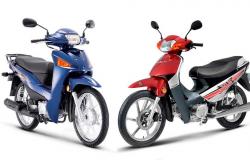(CNN) — There are some secret areas on wide-body aircraft where pilots and cabin crew go to rest during long flights. Passengers cannot access them under any circumstances and they are well hidden.
They are called Crew Rest Compartments and their location on the plane varies.
On newer aircraft, such as the Boeing 787 or the Airbus A350, they are located above the main cabin, at the top of the fuselage. But on older aircraft, they may also be in the cargo hold or simply in the main cabin.
They come in pairs: one for the pilots, which is usually above the cockpit and often includes two berths and a reclining seat, and one for the cabin crew, which usually contains six or more berths and is located above the aft galley. , the section in the back of the plane where food and drinks are prepared and stored.
Like a capsule hotel
Airlines have a say in the configuration of crew rest areas when they purchase a plane, but the main parameters are set by regulatory bodies such as the Federal Aviation Administration. It mandates, for example, that crew rest areas be “in a location where noise, odors, and intrusive vibrations have minimal effect on sleep,” and that they be temperature controlled and allow the crew to adjust the temperature. lightning.
Bunk beds (“or other surface that allows a flat sleeping position”) must measure 198 by 76 centimeters – tall people beware – and have at least 35 cubic feet, or one cubic meter, of space around them. . There must also be a common area for changing, entering and exiting that offers at least 1.8 square meters of space.
The end result is something akin to a Japanese capsule hotel: a windowless, narrow but cozy sleeping space, with power outlets and a light, as well as all the necessary safety equipment, such as oxygen masks, seat belt lights. security and an intercom, among others.
“They can be quite comfortable,” says Susannah Carr, a United Airlines flight attendant who works on Boeing planes such as the 787, 777 and 767.
The crew rest area of a Boeing 777 airliner. (Credit: Boeing)
“They have a padded mattress, a vent to keep the air circulating and temperature controls so you can keep it cooler or warmer, and they provide us with bedding, usually similar to what is used in business class on our international flights “I like them, but I’m only 5’7″, so if you put a 6’2″ person in there, they can be a little tight,” he says.
But are they better than a business class or even first class seat?
“In some ways yes, in others no,” says Carr. “The bunk beds can be wider than first class and personally, depending on the plane, I have more legroom. But it’s a bunk bed, so you don’t necessarily have all the space you have in the cabin and obviously you don’t have the privacy either. And if you’re claustrophobic, you can feel it; it’s a plane, so you don’t have a lot of space up there to make the most of every inch.
Hidden

The pilots’ rest area is near the cockpit. (Credits: Boeing)
The crew rest areas are designed not to draw too much attention from passengers, regardless of their location: “A passenger walking past would think it was a closet,” says Carr.
“I’m not going to go too much into how we access it – it’s safe, mind you. Every once in a while there are people who think it’s a bathroom door and try to open it, but instead we show them the way to the actual bathroom.”
Behind the door there is usually a small landing and a staircase leading to the upper floor, at least on more modern airplanes.
“The bunk beds are open on one side or one end, so you can crawl in; I sometimes jokingly refer to them as ‘the catacombs,'” Carr says.
The double-level airplane seat is back. This time, in first class.
On slightly older aircraft, such as the Airbus A330, the crew rest compartment may also be in the cargo hold, so a ladder would go down instead. But on even older aircraft, such as the Boeing 767, the seating areas are located in the main cabin, and are nothing more than reclining seats with curtains around them.
“They are very heavy curtains, which block out light and a good amount of sound, but not if there is an energetic crowd on the plane or an upset child. We have had passengers open the curtains looking for something or thinking they were going to enter the room.” kitchen, so it’s not necessarily the best rest.”
It’s no surprise that most flight attendants prefer upper berths over curtained seats, but the upgrade also benefits airlines, who don’t have to give up valuable cabin space that can be used instead for upper-row seats. passengers.
order of seniority

Split image of the cabin crew rest area of a Finnair A350. To the right is the entrance, accessed from the front kitchen. Aleksi (Credit: Kousmanen/Finnair)
Cabin crew on long-haul flights usually spend at least 10% of the planned flight time in rest areas.
“On average, I would say that means about 1.5 hours per long-haul flight,” says Karoliina Åman, a Finnair flight attendant who works on Airbus A330 and A350 aircraft. This, however, can vary depending on the airline and the flight time: the rest time can last up to several hours.
“As we do not have any private area on the plane to eat or drink coffee, this rest period is very important and useful for us,” he says.
“It is the time of the flight when we do not respond to passengers’ calls or do any other task other than resting, and letting our feet and mind have their rest as well. The purpose of this rest is to maintain an alert mentality and prepared throughout the flight so that, if something unexpected happens, we are ready to act.”
However, not everyone sleeps once in a bunk bed.
“Normally, on a one-way flight from Helsinki I take advantage of the break to listen to an audiobook or read a book, since I’m coming from home and I’m well rested. But on a one-way flight from the destination to Helsinki, you may have spent nights in sleep, for example, I have a hard time sleeping in Asia, and then during sleep you tend to fall asleep waking up from sleep can be a really tough experience sometimes if your brain has switched to night sleep mode,” says Åman. .

To reach the rest area of this SAS A330 aircraft, the cabin crew descends a short flight of stairs. (Credit: Philippe Masclet/Master Films/Airbus)
“Sometimes I can relax and sleep, other times my body is not ready for a nap. But since we are on a break, we are allowed to use our phones, so we could watch a movie on it, or read a book.”
The rest areas are closed during taxiing, takeoff and landing, and are used on a shift basis supervised by the cabin chief – or purser, in aviation jargon -, the member of the cabin crew who is in charge of all others and supervises operations on board.
This person usually uses a special bunk that is near the entrance to the rest areas and has access to an intercom to communicate with the pilots and the rest of the crew.
“In our industry, everything is based on seniority, from schedules to routes to days off,” Carr explains.
“The longer you have been, the better the benefits, and one of them is choosing the crew’s rest time: we go in order of seniority, so the person with the most seniority on the flight can choose whether they prefer the first break or the second, and then you go down the list until everyone has breaks.
Advantages for pilots
The pilots’ rest area, separate from that dedicated to the cabin crew, is close to the cockpit. Depending on the length of the flight, there may be up to four pilots on board, but two will always be in the cockpit; Therefore, the pilots’ rest area only has two berths (or even only one on older aircraft), but includes a seat sometimes equipped with in-flight entertainment, which cabin crew do not have. Other than that, the compartments are quite similar.
“I tend to sleep pretty well in there,” says Aleksi Kuosmanen, deputy chief fleet pilot at Finnair.
Kuosmanen flies A330 and A350 aircraft, and says he prefers the latter’s seating area, located above the forward galley rather than in the main cabin. “It has very good curtains, you can regulate the temperature very well, there is great ventilation and it is more soundproof. You can’t hear anything that happens in the kitchens, it is really quiet and comfortable.”

On this Boeing 787 Dreamliner, the rest room for crew members is located at the rear of the plane. (Credit: Roslan Rahman/AFP/Getty Images)
The next time you’re on a long-haul flight, you might want to look for an inconspicuous door at the front or rear of the plane: if you see a pilot or flight attendant disappear through it, you may have discovered an area Rest.
But keep in mind that crew members won’t necessarily be willing to show it to you, since passenger access to the rest areas is prohibited: “It’s a little like Disney: we keep the magic behind closed doors,” says Carr.
“You don’t necessarily want to know that your flight attendants are getting some sleep, but at the same time you’ll be happy when we show up fresh as a rose after our nap.”











